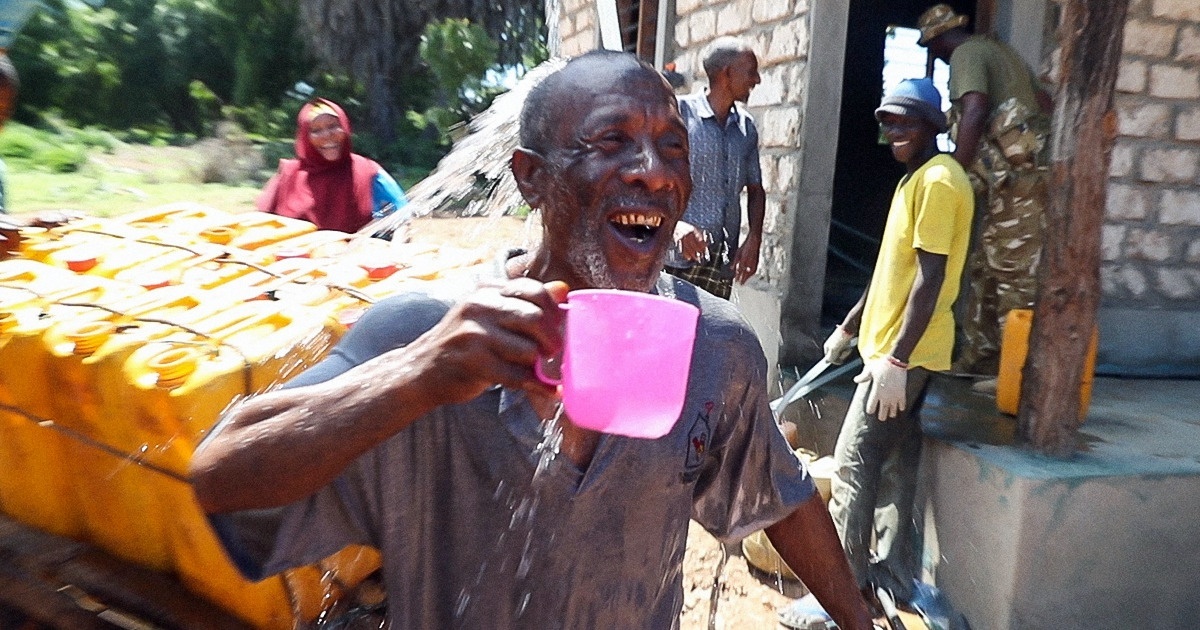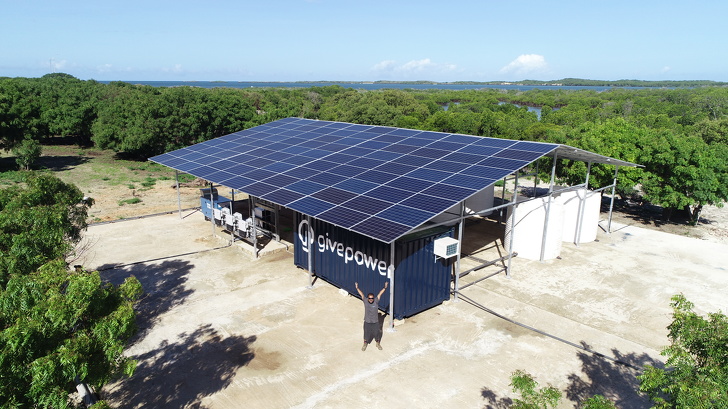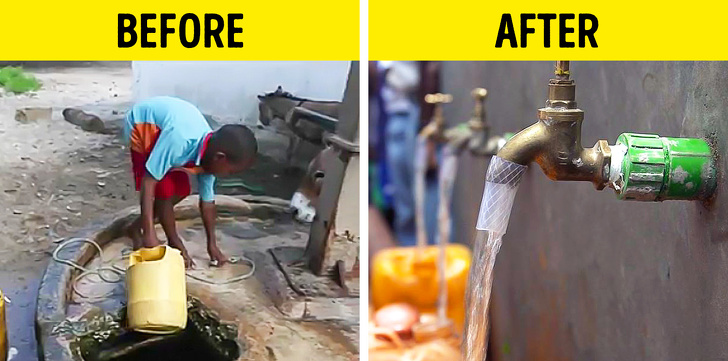
About 2.2 billion people in the world do not have access to drinking water services that are managed safely. That occurs on a planet that is 71 percent covered by that essential element for life. What seems like a contradiction, maybe the critical challenge for the future of humanity: How to turn the seawater of the oceans into drinking water. Well, the answer is located in a small town in Kenya, near the border of Somalia.
This new solar water treatment plant was developed by the NGO (non-governmental organization) GivePower. The pilot test has already improved the lives of residents of Kiunga, a small town in Kenya, and they seek to reproduce the technology in other parts of Earth. In the end, you’ll find a bonus with figures on global water consumption and the value of using it responsibly.
GivePower (@givepowerfoundation) on
One in every three people in the world does not have access to drinking water, according to a report published less than two months ago by UNICEF and the World Health Organization. The conditions are worse in sub-Saharan Africa. That’s why the area was chosen to install the first solar plant system that transforms the Indian Ocean’s saltwater into clean drinking water. It’s been in operation since 2018.
GivePower (@givepowerfoundation) on
Kiunga is the name of the fishing town where the project is successfully operating. It was funded by the non-profit Givepower. Thanks to its achievements, the organization is planning on replicating the project in other countries such as Haiti and Colombia.
A typical desalination plant consumes high amounts of power, and the process is expensive. It can operate only in areas which have enough facilities to produce and distribute that much energy. The NGO solved those problems by using a technology called “solar water farms,” that involve the installation of solar panels that can produce 50 kilowatts of energy, high-performance Tesla batteries to store it, and two water pumps which operate 24 hours per day.



The system can generate drinking water for 35,000 people per day. Plus, according to GivePower, the water quality is better than that of a typical desalination plant. Besides, it does not even have the negative environmental impact the process usually causes as the extraction of salt produces saline residues and pollutants which are harmful to animals and plants.
After the rainy season produced by the monsoon wind, Kiunga becomes an area of extreme drought and its 3,500 residents were forced to travel for an hour to collect water. According to Brightside, the only source they had available came from a well located on the same channel that animals used for bathing. It was full of pollutants and parasites, which could potentially cause diseases like E. coli and even death.
GivePower (@givepowerfoundation) on
By 2025, half of the planet’s population will live in areas facing water scarcity. The reuse of wastewater to recover nutrients or energy is becoming a central strategy. It is the same regarding the treatment of seawater. Only 2.5 percent of the planet’s water is freshwater, a number which is declining with the effect of global warming on glaciers and icebergs.
In such circumstances, the NGO has already started to install solar panels in over 2,500 schools, businesses, and emergency services in 17 countries, and it’s raising money to fund the construction of additional “solar water farms” to improve the health of the population and reactivate the economy of areas which have been devastated by drought.
- World Water Day is celebrated every year on March 22 to raise awareness about the conservation, development, and responsible consumption of water resources.
- Around 3,000 liters of water are required to produce enough food to meet a person’s daily needs.
- Downloading only one single gigabyte (GB) of data from the internet might use up to 200 liters of water to cool the servers used in computer centers to allow connectivity.
- Eighty percent of wastewater is released into waterways without proper treatment.
- The average person consumes the equivalent of over 100,000 glasses of water annually when taking ten-minute daily showers.
- Latin America holds abundant water resources, according to fao.org: It gets almost thirty percent of the entire planet’s rainfall and has 28,000 cubic meters of water per capita each year, which is higher than the world average.
- Among the Sustainable Development Goals to be achieved by 2030, the UN established a goal to reach universal and equal access to drinking water, adequate sanitation and hygiene services, and to lower water pollution.













COMMENTS